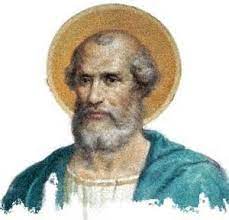In the annals of Christian history, the figure of Pope Linus emerges as an enigmatic yet pivotal character. As the second pope of the Catholic Church, following St. Peter, Linus embodies the continuity of leadership, faith, and pastoral care that would come to characterize the ecclesiastical hierarchy. As we delve into the life and legacy of Pope Linus, we not only explore the foundational years of the papacy but also uncover the underlying currents of early Christian faith that contributed to the growing significance of this office.
The historical context of Linus’s papacy is crucial for understanding his role. Linus served as pope approximately between 67 AD and 76 AD, a time when the early Christian church was still grappling with its identity, often perceived as a sect within Judaism and navigating the sociopolitical complexities of the Roman Empire. The nascent church faced external pressures, including persecution under emperors like Nero and the ever-present challenge of heretical teachings emerging from within. In such a turbulent atmosphere, Linus’s role as the spiritual shepherd of the Christian flock becomes all the more significant.
Pope Linus is depicted in early ecclesiastical writings as a man of devout faith, intent on preserving the teachings imparted by St. Peter. This transmission of apostolic authority, which would be crucial for the legitimacy of the papacy, illustrates why Linus holds a place of reverence within the history of the Church. It is said that he was the first pope to establish the formal structure of the Church’s leadership, setting a precedent for subsequent popes to follow. The significance of Linus’s contributions can hardly be overstated, as they laid the groundwork for an institution that would evolve over the centuries into one of the world’s most influential religious organizations.
One compelling aspect of Linus’s legacy is the mention of his decree regarding the practice of celibacy among the clergy. While the specifics of these decrees remain somewhat obscured by history, they suggest an early emphasis on maintaining the sanctity and dedication of the priestly vocation. This reflects a broader theme in early Christianity, where the concept of sacrifice was intimately tied to the following of Christ. The idea that those in spiritual authority could be called to a life marked by celibacy signifies an awakening to the notion that holiness often requires personal sacrifice.
The writings of early Church Fathers, such as Irenaeus and Eusebius, provide further insights into Linus’s papacy and the associated developments within the early Church. Irenaeus, writing in the late second century, highlights the episcopal succession and the importance of maintaining doctrinal integrity through the bishops who succeeded the apostles. The reference to Linus in this context underscores a continuum of faith that would endure through generations, reinforcing the foundational belief in apostolic succession as a means to safeguard the teachings of Christ.
Moreover, Linus’s time as pope coincides with the burgeoning spread of Christianity beyond Judean borders. As missionaries took the teachings of Jesus into the Greco-Roman world, Linus was charged with ensuring that the early Christians adhered to authentic doctrine. This task was not only about preserving established beliefs; it also involved confronting heresies, some of which began to take root during Linus’s papacy. His leadership was marked by both consolidation of the faith and vigilance against deviations from orthodox belief.
It is worth noting that the relatively sparse historical references to Pope Linus contribute to the mystique surrounding his papacy. In a landscape rich with accounts of other early popes and church leaders, Linus’s understated presence invites deeper contemplation of why some figures remain shrouded in obscurity while others achieve legendary status. The ambiguity of Linus’s writings and actions prompts inquiry into the nature of legacy itself, suggesting that profound influence does not always require extensive documentation. Perhaps it is in the silence of Linus that one can find a resonant reflection of faith’s quiet strength and steadfastness amidst adversity.
The reverence for Pope Linus not only speaks to his historical role but also reveals the broader themes of fidelity and perseverance in the early Church. The challenges faced by early Christians are echoed in contemporary experiences of faith communities today. Just as Linus navigated the tumultuous waters of his time, modern believers find themselves confronting societal pressures and moral dilemmas that challenge their convictions. The early lessons imparted by leaders like Linus resonate through the ages, serving as a source of inspiration for navigating faith in an increasingly complex world.
As we reflect upon the life of Pope Linus, it is essential to recognize that his papacy, though brief, was instrumental in shaping the trajectory of the Catholic Church. His legacy, intertwined with that of St. Peter and the apostolic tradition, calls for admiration and contemplation of the dynamics of faith leadership. Linus exemplifies a model of spiritual authority grounded in humility, service, and unwavering dedication to the core tenets of Christianity.
Ultimately, the story of Pope Linus is not merely a historical account; it is an invitation to deepen one’s understanding of the faith. It encourages us to consider how the lessons of the past inform our present and guide our future. The allure of early papal history, especially figures like Linus, lies not only in their significance as ecclesiastical leaders but also in their embodiment of the enduring challenges and triumphs of the Christian journey.



